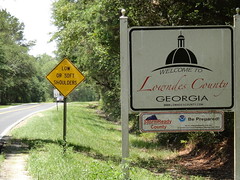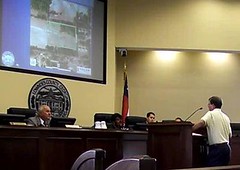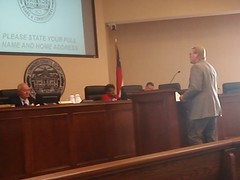Ariel Hart wrote for the AJC 15 August 2011, Regional transportation list approved
New swifter ramps! Countless arterial roads less clogged! Well, except by pedestrians trying to scurry through the faster traffic.If the projects are built, in just over a decade passengers could be riding trains from Atlanta to Cobb County or to Emory University, or traveling new, swifter ramps through the Ga. 400/I-285 interchange, or finding countless arterial roads wider and less clogged, from Henry County to Cherokee County and all points in between.
Why, in the second decade of the 21st century, do we continue with a failed traffic model from the middle of the 20th century? Seems to me traffic safety should be pertinent and should include pedestrians. and instead of more unsafe roads making life unpleasant and unsafe for communities, we could go for roads that serve communities.
-jsq










